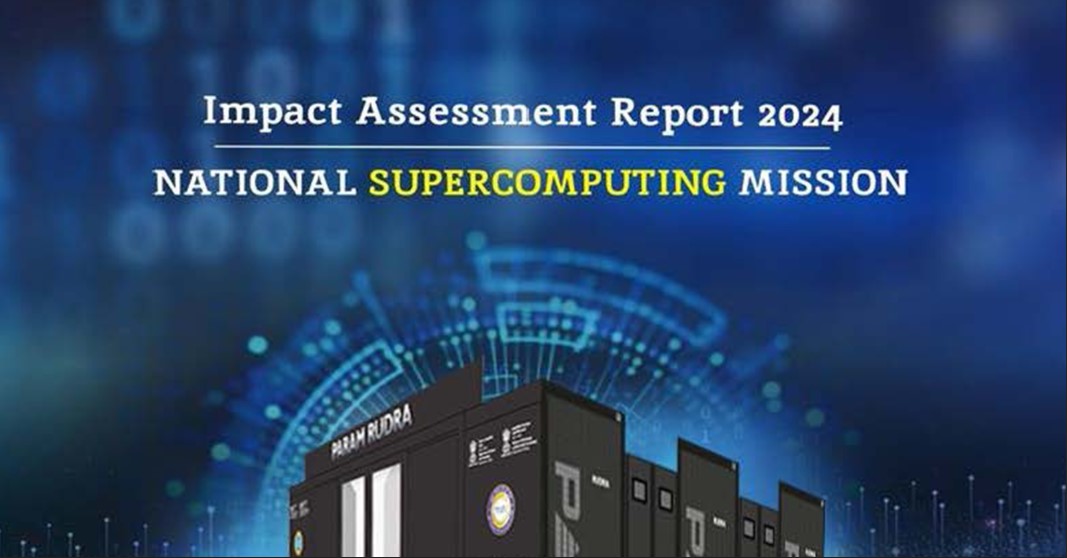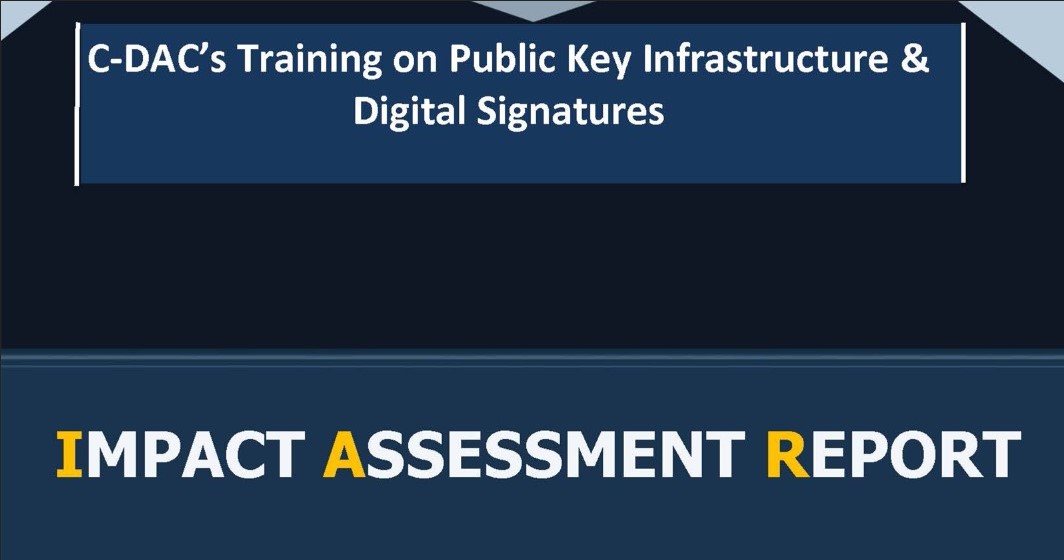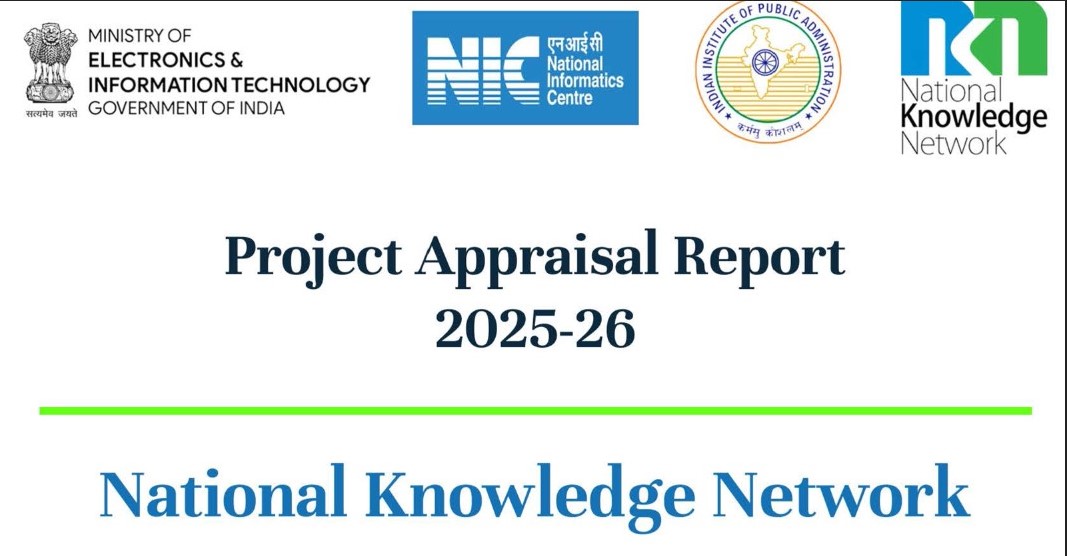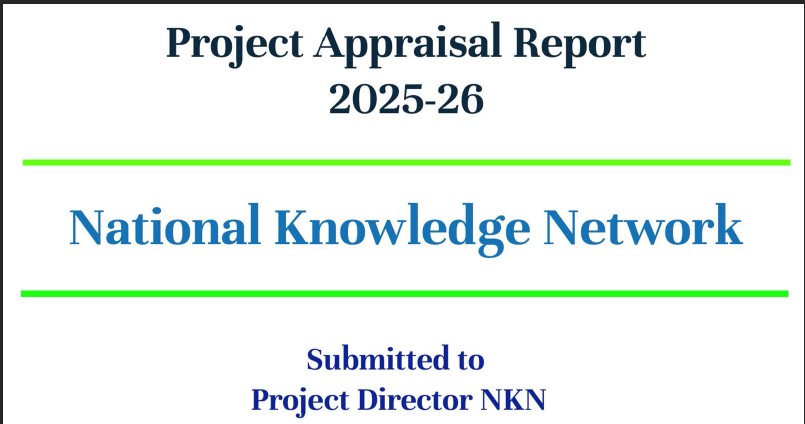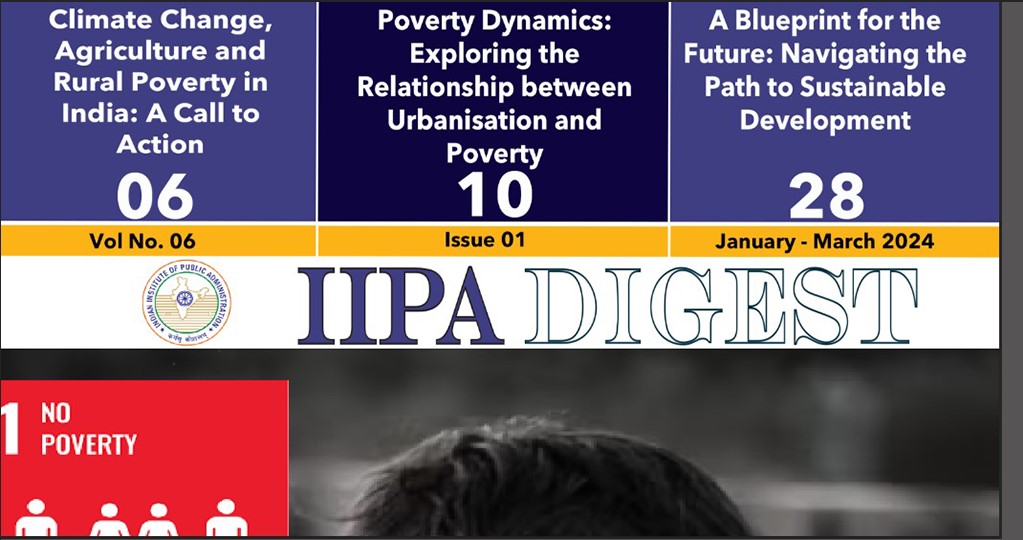Era of Artificial Intelligence: Revolutionising Public Services and Governance
Introduction
The twenty-first century has often been described as the era of artificial intelligence (AI), with technology increasingly shaping the way societies live, work, and govern themselves. From healthcare and education to transport and finance, AI has moved from being a futuristic concept to a present reality penetrating almost every sphere of human activity. For governance and public administration, this transformation is nothing short of revolutionary. From digitised bureaucracies in Estonia to predictive analytics in the United States, AI has evolved into a key instrument of statecraft. In India too, where the state interacts with over a billion citizens every day, AI offers the promise of transparency, efficiency and citizen empowerment. According to NITI Aayog’s National Strategy for Artificial Intelligence (2018), AI can drive inclusive growth while addressing deep-rooted governance challenges. The integration of AI into governance has the potential to revolutionise public service delivery, making it more efficient, transparent, and citizen-centric. At the same time, it raises profound ethical, institutional, and social questions that must be addressed to ensure inclusivity and accountability.
The term “Artificial Intelligence” was first coined in 1956 at the Dartmouth Conference, but its application in governance has accelerated only in the last decade with advances in machine learning, big data analytics, and automation. What was once science fiction has become an operational reality, influencing how governments design policies, deliver services, and interact with citizens. Today, AI is not just an enabler of efficiency; it is a potential game changer that can redefine the social contract between the state and its citizens. The integration of AI in governance stems from the growing complexity of public administration in the digital age. Traditional bureaucratic systems, despite their legal – rational foundation as envisioned by Max Weber, have been long criticised for red tape, delays, and corruption. In a world where citizens demand real time solutions, personalised services, and transparent processes, conventional governance structures often fall short. This is where AI offers unprecedented possibilities predictive algorithms can anticipate citizen needs, chatbots can provide instant grievance redressal, and data-driven platforms can ensure evidence-based policy making. From urban planning and law enforcement to healthcare and taxation, AI has the potential to revolutionise every facet of governance.
India, with its vast population and administrative diversity, faces unique governance challenges – bureaucratic inefficiencies, service delivery gaps, and limited state capacity to address the needs of over 1.4 billion citizens. In this context, AI offers a pathway to leapfrog developmental hurdles and achieve inclusive growth. The Government of India, through its flagship “Digital India” program, has laid the foundation for digital governance, and the NITI Aayog’s National Strategy for Artificial Intelligence emphasises leveraging AI for sectors such as healthcare, agriculture, education, smart cities, and infrastructure. Platforms like UMANG, MyGov, and AI-enabled chatbots for tax filing and grievance redressal have already introduced citizens to the possibilities of AI-driven governance. These interventions reflect an emerging paradigm where governance is no longer confined to static rules but adapts dynamically through intelligent systems.
However, the enthusiasm surrounding AI in governance must be tempered with caution. The transformative potential of AI is accompanied by profound ethical, legal, and social implications. Data privacy concerns, algorithmic bias, the risk of mass surveillance, and digital exclusion threaten to erode trust in government systems if not addressed proactively. The Cambridge Analytica scandal and allegations of algorithmic discrimination in Western countries underline the global nature of these risks. In India, where digital literacy and internet penetration remain uneven, the danger of deepening the digital divide is real. Moreover, the displacement of traditional jobs due to automation and AI-based decision-making raises critical questions about the future of work in public administration. These challenges make it evident that technology, while powerful, is not a panacea; it must be embedded within a framework of accountability, transparency, and inclusivity.
The rise of AI also invites a fundamental rethinking of governance philosophy. Should governance be fully automated. Or should AI function as an enabler while preserving human discretion? How can governments balance efficiency with democratic values such as participation, privacy, and equity? These questions underscore the need for an approach that aligns technological innovation with constitutional principles and public interest. Ultimately, the era of Artificial Intelligence is not about replacing human governance but about augmenting human capability. It offers governments an opportunity to build citizen-centric systems that are agile, data-driven, and future-ready. At the same time, it imposes an obligation to anticipate and mitigate risks through robust institutions, ethical norms, and participatory mechanisms. As nations worldwide, including India, embark on this journey, the challenge will be to ensure that AI serves as a force empowerment, not exclusion; for accountability, not surveillance; and for inclusive development, not digital elitism. The success of AI in governance will therefore depend not merely on technological sophistication but on the values and the vision that guide its application.
This essay seeks to critically examine how Artificial intelligence is revolutionising public services and governance, the opportunities it presents, the challenges and ethical dilemmas it poses, and the way forward for creating a governance ecosystem that is efficient, transparent, and citizen-oriented.
The Promise of AI in Governance
The promise of AI lies in its ability to make governance predictive, proactive, and personalised. Traditionally, governance has been reactive – responding to issues after they arise. AI shifts this paradigm by using data analytics and machine learning to anticipate trends and deliver services before problems escalate. For example, AI can predict natural disasters, forecast economic shocks, and detect fraud in welfare programs, thereby saving lives and resources. AI also introduces efficiency gains by automating repetitive tasks, reducing human error, and ensuring faster decision-making. This does not merely enhance service delivery but also redefines the role of public servants from routine administrators to strategic decision-makers. According to McKinsey (2021), governments that deploy AI effectively can reduce service delivery costs by 20-30% while improving citizen satisfaction significantly.
Opportunities of AI in Public Services and Governance
The advent of Artificial Intelligence presents transformative opportunities for governance systems and public service delivery worldwide. By enabling data-driven decision-making, automating routine processes, and enhancing citizen engagement, AI promises to address long-standing inefficiencies of bureaucratic structures and create a responsive, transparent, and citizen centric administration. This section critically examines the vast scope of AI applications in governance, drawing on global experiences and Indian examples to highlight its potential impact across sectors.
Enhancing Efficiency
One of the most visible impacts of AI in governance is the enhancement of efficiency. AI systems can process vast amounts of data at speeds unimaginable for human administrators. This enables governments to reduce delays in decision-making, streamline processes, and cut down on bureaucratic red tape. For instance, the use of AI-powered chatbots in government portals allows citizens to resolve queries instantly, without standing in long queues or navigating complex departmental hierarchies. Examples include UMANG, which consolidates multiple government services, and “Ask Disha” for Indian Railways, which assists with ticket booking and information. Other examples include chatbots for visa applications and immigration queries within the US Department of Homeland Security. The time saved through such automation allows public officials to focus on complex, judgement-based tasks rather than routine clerical work, thereby improving governance efficiency and accountability.
Fighting Corruption and Promoting Transparency
Corruption and leakages have long undermined the credibility of governance systems. AI-driven solutions can act as a robust deterrent by enabling real-time monitoring of transactions, detecting anomalies, and promoting transparency in public procurement processes. Estonia employs blockchain and AI to ensure tamper-proof government records, making corruption nearly impossible in its e-governance ecosystem. Whereas in India, AI-backed tools under the Public Financial Management System (PFMS) track fund flows in real time, reducing scope for diversion of public money.
Transparency too benefits from AI adoption. Digital systems, backed by AI, reduce human discretion in routine tasks, thereby lowering the scope for corruption. The introduction of AI-driven dashboards that publicly display the progress of government schemes makes governance more open and accountable. In Chandigarh, AI-enabled traffic cameras have not only improved road discipline but also reduced opportunities for rent-seeking by ensuring automated challans.
Improving Policy Design and Implementation
AI’s potential is not only limited to execution; it extends to policy design itself. By analysing patterns in large datasets, AI helps policymakers anticipate problems and design targeted interventions. For example, AI tools can study climate data to predict agricultural risks and recommend crop insurance strategies. Similarly, predictive analytics can identify areas prone to disease outbreaks, allowing health departments to act proactively. AI-based crop monitoring, soil advisory systems, and early disease detection programs (like NITI Aayog’s partnership with Microsoft) show how governance can become citizen-centric and data driven.
India’s ambitious “Digital India” programme provides the foundation for such initiatives. Aadhaar-linked databases, Jan Dhan accounts, and mobile connectivity together form the JAM trinity, which, when combined with AI, enables real-time monitoring of welfare delivery. Schemes like direct benefit transfer (DBT) and e-KYC can thus be fine-tuned to reduce leakages and ensure that subsidies reach the intended beneficiaries.
Such predictive governance fosters anticipatory administration, reducing policy lags and ensuring resource optimisation for targeted outcomes.
Citizen-Centric Service Delivery
AI also personalises governance. Citizens are not merely recipients of services but active participants in governance processes. AI-driven platforms provide customised information and services, from agricultural advice tailored to local soil conditions to telemedicine consultations based on patient history.
Globally, Estonia offers a model of how AI can transform state-citizen interactions. Its e-residency and e-governance platforms use AI to handle a wide range of services seamlessly, reducing friction for citizens. Estonia has become the global benchmark for e-governance, with 99% of governmental services available online through its AI-driven e-Residency and X-Road platforms (World Bank, 2022). Dubai launched its AI Strategy 2031, appointing the world’s first Minister of AI to streamline service delivery and reduce bureaucratic red tape.
India, with its scale, faces a bigger challenge, but initiatives like the MyGov platform or AI-powered grievance redressal systems show that citizen-centric governance through AI is not only possible but increasingly visible.
Strengthening Urban Management and Smart Cities
Urban governance has been one of the early frontiers of AI adoption. Smart city projects across India have used AI for traffic management, waste collection, and energy optimisation. In Chandigarh, AI-enabled adaptive traffic lights have been deployed to manage congestion, and facial recognition systems are being tested for public safety. These initiatives demonstrate how AI can help cities address the challenges of rapid urbanisation and population growth. Singapore integrates AI into urban mobility, healthcare, and education under its Smart Nation initiative, using data to improve traffic management and personalise citizen services.
AI in Law Enforcement and Judicial Processes
AI’s role in predictive policing, crime mapping, and forensic analysis has gained prominence in modern governance. Law enforcement agencies can deploy AI tools to analyse crime data, identify high-risk zones, and allocate resources effectively. The New York Police Department (NYPD) uses AI-based predictive analytics to forecast crime hotspots, improving patrol efficiency. States like Uttar Pradesh and Haryana use AI-powered facial recognition systems in public spaces for enhanced security and faster criminal identification.
In the judiciary, AI-enabled legal research platforms expedite case preparation, reducing pendency and ensuring timely justice delivery.
AI in Healthcare Governance
Healthcare is one of the most critical domains where AI is revolutionising public service delivery. AI tools enable early disease detection, predictive modelling of epidemics, and efficient hospital management. Governments can deploy AI-driven platforms for telemedicine, automated diagnostics, and personalised treatment recommendations, ensuring equitable healthcare access even in remote regions. The UK’s National Health Service (NHS) uses AI systems like Babylon Health for symptom checking and remote consultations, easing the burden on healthcare professionals. The eSanjeevani platform, integrated under the Ayushman Bharat Digital Mission, uses AI-based triage systems to facilitate teleconsultations, bridging the urban – rural healthcare divide.
AI also plays a crucial role in epidemic management. During the COVID-19 pandemic, governments worldwide, including India, leveraged AI for contact tracing, predicting infection hotspots, and optimising vaccine distribution strategies.
AI in Education and Skill Development
AI-driven personalised learning systems can address the shortcomings of a rigid education model by customizing content for each learner. Like Singapore’s Ministry of Education uses AI tools to monitor student performance and suggest targeted interventions. In India, DIKSHA platform integrates AI for adaptive learning, benefitting millions of students in remote areas. This ensures inclusive education, bridging the urban rural divide and preparing a future-ready workforce.
AI in Disaster Management and Climate Governance
Governments face growing challenges from natural disasters and climate change. AI-driven systems can predict weather patterns, model disaster impact scenarios, and guide emergency response efforts. For example, Japan uses AI-based early warning systems for earthquakes and tsunamis, saving thousands of lives annually. The Indian Metrological Department employs AI algorithms to forecast cyclones and floods with greater accuracy, aiding disaster preparedness in vulnerable states like Odisha and Assam.
Financial Inclusion and Tax administration
AI-powered platforms enable governments to expand financial inclusion through real time monitoring of transactions and fraud detection. Tax administrations worldwide use AI to enhance compliance and identify evasion patterns. A few examples include the U.S. Internal Revenue Service (IRS), which deploys AI to detect tax fraud and improve compliance. In India, the Goods and Services Tax Network (GSTN) uses AI to track fake invoices and prevent tax evasion, contributing to increased revenue mobilisation.
Thus, AI-powered audit systems can analyse vast financial data to detect irregularities in tax filings, procurement contracts, and expenditure statements, significantly enhancing accountability.
AI in Defence and National Security
National security is a core function of the state, and the integration of Artificial Intelligence is fundamentally reshaping how countries defend their sovereignty. AI technologies bring speed, accuracy, and predictive capabilities to defence systems, helping governments move from reactive responses to proactive threat neutralisation. India’s Operation Sindoor, a joint exercise between the Indian Army and AI-integrated systems, highlighted the potential of autonomous surveillance drones, automated logistics, and AI-driven decision-making in real combat scenarios. The operation demonstrated how AI-based tactical planning tools can enhance situational awareness and reduce human error, particularly in high-risk zones such as mountainous terrains.
This highlights how AI is no longer experimental but central to governance models across the globe.
AI Hype vs Reality – The Implementation Gap
While AI promises transformative governance, reality often lags behind expectation. According to a World Bank (2022) review of e-governance projects in developing nations, over 40% of AI-driven initiatives fail due to poor data quality, inadequate infrastructure, and lack of skilled manpower. In India, several Smart City projects equipped with AI-enabled traffic systems underperformed because of connectivity issues and bureaucratic bottlenecks. Chatbots fail to handle local dialects, frustrating citizens. Globally, predictive policing tools like COMPAS promised fairness but reinforces bias, proving that AI without ethical oversight magnifies existing inequalities. This hype – reality gap underscores a critical insight: AI is not a magic bullet. Without contextual design, citizen participation, and ethical audits, ambitious AI projects risk becoming high-cost failures.
Challenges and Ethical Concerns
While Artificial Intelligence has opened unprecedented opportunities for efficient governance, its adoption in public administration is far free from challenges. To realise the transformative promise of AI in public service delivery, it is crucial to confront the risks and limitations that accompany it.
Bureaucratic Red Tape and Institutional Resistance
Even the most advanced AI systems cannot bypass entrenched bureaucratic inertia. In India, public administration is often slowed by procedural rigidity, overlapping responsibilities, and reluctance to embrace change. AI-driven platforms may automate routine processes, but unless supported by institutional reforms, they risk becoming another layer of administrative complexity. For instance, despite the adoption of e-office systems, many departments continue to rely on manual approvals, undermining the efficiency gains promised by digital governance. Several Smart City projects (like Bhopal and Lucknow) have reported delays in AI-enabled command centres due to slow tender approvals, overlapping jurisdictions, and bureaucratic bottlenecks (Ministry of Housing and Urban Affairs reports,2022). This shows that even with technology, governance can slow adoption.
Corruption and Misuse of AI
Technology itself is not immune to misuse. Without robust accountability frameworks, AI tools could be manipulated to favour vested interests. In India, Aadhaar-based welfare systems faced misuse when local officials diverted rations by exploiting biometric authentication failures (Scroll.in,2018). Globally, misuse is more striking. China’s surveillance AI has been criticised for misuse in Xinjiang, enabling large-scale monitoring of minorities (Human RightsWatch,2019). Similarly, predictive policing tools like COMPAS in the United States demonstrated racial bias, unfairly targeting African-American communities under the guise of objectivity. These examples highlight how AI may deepen injustice if accountability frameworks are weak.
Lack of Citizen Participation and Trust Deficit
AI projects in governance often fail because citizens are treated as passive users, not active stakeholders. For instance, several Indian municipal e-portals for grievance redressal remain underutilised, not because citizens dislike them, but because they were never consulted in the design phase. In contrast, Estonia’s e-governance model ensures citizen involvement through constant feedback loops and digital literacy campaigns, building trust and adoption. The contrast shows that AI systems in governance are as much about “citizen engagement” as they are about “technology”. Without public buy-in, even the most advanced AI solutions risk alienating the very people they are meant to serve.
Digital Divide and Inequalities in Access
The digital divide is perhaps the single largest barrier to inclusive AI adoption. In India, rural internet penetration is just 30% compared to 70% in urban areas (TRAI,2023). For citizens without smartphones, reliable internet, or digital literacy, AI-enabled services like Digi Locker, e-SHRAM, or AI-based telemedicine remain inaccessible. This risk is not unique to India. In Africa, only 36% of the population has reliable internet access (World Bank, 2022), meaning millions are excluded from digital-first public services. On the other hand, countries like Singapore and South Korea have nearly universal access, allowing them to deploy AI-based citizen services equitably. The challenge is clear: unless governments invest in digital infrastructure and literacy, AI will deepen inequality instead of reducing it.
Workforce Displacement and Skill Gaps
AI’s automation potential is both its strength and its threat. In Indian public banks, AI chatbots and automated systems have reduced clerical workloads but also raised concerns about redundancy among lower-level employees. A McKinsey report (2021) estimated that up to 30% of administrative public sector jobs in the U.S. could be automated. Dubai, meanwhile, has actively retrained civil servants under its “Smart Dubai” program to adapt to AI-driven governance. This shows that displacement is not inevitable- if governments anticipate skill shifts and invest in reskilling programs, AI can complement rather than replace human workers.
Data Privacy and Security Risks
AI-driven governance depends on vast amounts of personal data, raising risks of surveillance and misuse. In India, the 2018 Aadhaar data breach exposed details of over a million citizens, raising doubts about safeguards. Globally, the Cambridge Analytica scandal (2016) showed how personal data was harvested and processed using AI to manipulate democratic outcomes. More recently, Singapore’s COVID-19 contact tracing app, Trace Together, sparked controversy when data meant for health purposes was also made accessible to law enforcement agencies. These incidents highlight that without clear legal frameworks like the EU’s General Data Protection Regulation (GDPR), citizens will remain vulnerable.
Ethical Concerns and Algorithmic Bias
AI is only as biased as the data it is trained on. In India, Delhi Police’s trial of facial recognition technology yielded accuracy as low as 2%, risking wrongful arrests (Internet Freedom Foundation,2020). Amazon had to scrap its AI hiring tool (2018) after it was found systematically discriminating against female candidates. Even in healthcare, AI algorithms have sometimes underestimated risks for Black patients in the U.S., reflecting racial bias in datasets. These examples underscore the ethical dilemma: AI reflects societal inequalities unless actively corrected. Governance must therefore integrate human oversight, ethical audits, and transparency into AI systems.
Environmental Concerns and Carbon Footprint
AI is resource-intensive. A 2019 MIT study found that training a single large AI model emitted as much carbon as five cars over their lifetime. In India, the rapid rise of AI data centres expected to triple by 2025 (NASSCOM, 2022) raises concerns, since most electricity still comes from coal. Countries like Iceland have mitigated this by running AI servers on geothermal and hydro energy, showing that sustainable AI is possible. But without similar foresight, AI’s carbon footprint could undermine global climate goals.
Towards Responsible AI in Governance
The challenges above show that AI is not just a technological issue but also a political, social, and ethical one. Countries like Estonia and Singapore have demonstrated that citizen involvement, strong privacy protections, and digital equity are critical. For India, the task is doubly complex: ensuring inclusion while also safeguarding against corruption, misuse, and environmental costs. AI can revolutionise governance only if its risks are addresses in a holistic and transparent manner.
One emerging debate revolves around governance centralisation. Should AI regulation in India remain under a central nodal agency or follow a federal model allowing states flexibility? A hybrid model could balance uniform standards with textual autonomy.
Way Forward: Building a Responsible and Inclusive AI-enabled Governance Framework
Artificial Intelligence has the potential to transform governance in ways comparable to the Industrial Revolution or the Digital Revolution. Yet, to realise this potential responsibly, India and the world must adopt a multi-dimensional strategy that ensures technology augments democracy, inclusion, and sustainability rather than undermining them. The following pathways provide a roadmap for the way forward.
Strengthening Institutional and Legal Frameworks
One of the foremost requirements for responsible AI governance is a robust regulatory environment. India has taken initial steps through the Digital Data Protection Act,2023, but this must be supplemented by a comprehensive AI policy framework. Countries such as the European Union are already moving ahead with the EU AI Act (2024), which classifies AI systems into risk categories and mandates strict oversight for “high-risk” applications in policing, healthcare, and governance. India can learn from this model while tailoring it to its federal structure.
Additionally, creating an independent AI Ethics and Governance Commission similar to the role of the Election Commission can ensure accountability in the deployment of AI across government departments. Such a commission could conduct audits, set ethical guidelines, and review misuse complaints. In India, where bureaucratic red tape often slows progress, a specialised nodal agency will help balance innovation with oversight.
Enhancing Transparency and Accountability Mechanisms
The legitimacy of AI in governance depends on public trust, which can only be earned through transparency. Governments should ensure that AI algorithms used in decision-making are explainable and subject to scrutiny. For example, New York City has mandated disclosure of AI usage in hiring processes, while Estonia publishes details of how AI is integrated into public services.
In India, AI is already being piloted in judicial contexts, such as the Supreme Court’s use of AI for translation and legal research. However, concerns remain about opaque decision-making. Introducing “Algorithmic Impact Assessments (AIA)” similar to environmental impact assessments can evaluate the fairness, risks, and social effects of AI projects before deployment.
Bridging the Digital Divide and Ensuring Inclusivity
For AI-driven governance to be equitable, it must not leave behind those without digital access. India still struggles with rural internet penetration and digital literacy, creating risks for exclusion. To address this, a three-pronged approach is necessary:
Infrastructure Expansion – Expanding Bharat Net to ensure reliable broadband connectivity in every Gram Panchayat.
Affordable Access – Subsidised data packages for rural households, as seen in Kenya’s digital inclusion programs.
Digital Literacy Campaigns – Community-based training programs, similar to Singapore’s “Digital Readiness Blueprint,” to equip citizens with skills to engage with AI-enabled services.
Only when citizens are digitally empowered can AI governance become genuinely participatory.
Building Human Capacity and Reskilling the Workforce
The adoption of AI will inevitably change the nature of jobs in governance. While repetitive clerical tasks may be automated, new roles in data analysis, policy design, and citizen engagement will emerge. To manage this transition, governments must invest heavily in capacity-building programs.
Dubai’s “Smart Dubai” initiative is an instructive example: every civil servant was trained in digital and AI tools to ensure smooth adoption. Similarly, India could establish AI training academies within the Lal Bahadur Shastri National Academy of Administration (LBSNAA) and state-level administrative training institutes. This would ensure bureaucrats and public servants not only adopt AI but also understand its ethical implications.
For frontline workers like teachers, health staff, and police, AI should be presented as an assistant rather than a replacement. Structured retraining programs and incentives will mitigate fears of displacement.
Promoting Ethical AI through Principles of Fairness and Human Oversight
Ethics must remain at the core of AI governance. Countries like Canada and Singapore have already developed AI Ethics Frameworks emphasising transparency, fairness, and human-centricity. India too can institutionalise “AI Ethics by Design” requiring that every government AI project be reviewed for bias, data quality, and human oversight before deployment. Moreover, AI should never replace final human judgement in sensitive areas such as criminal justice, welfare distribution, or healthcare diagnosis. Instead, it should serve as an assistive tool, with accountability resting firmly with human decision-makers. This dual balance preserves both efficiency and democratic responsibility.
Safeguarding Data Privacy and Cybersecurity
Data is the fuel for AI. However, without strong privacy protections, citizens may lose trust in public digital systems. India must strengthen its newly enacted data protection law by ensuring clear consent mechanisms, grievance redressal avenues, and strict penalties for breaches. On the cybersecurity front, AI itself can be weaponised for cyberattacks, as seen in recent deepfake scams and ransomware. Therefore, India should integrate AI-enabled cyber defence systems, modelled on Israel’s proactive cybersecurity strategies, to protect critical digital infrastructure.
Encouraging Citizen Participation and Co-creation of Services
Governance is most effective when citizens are co-creators of policies, not passive recipients. In Estonia, citizens actively participate in designing e-governance platforms through hackathons and open consultations. India can replicate this by organising “AI for Governance Hackathons” in collaboration with universities, startups, and civil society. Furthermore, grievance redressal mechanisms powered by AI should include feedback loops where citizen complaints help improve the system over time. Chandigarh’s digital grievance portal is a modest step in this direction but can be scaled nationally with AI-based analytics to detect systemic issues.
Encouraging Public – Private Partnerships (PPPs)
The private sector is the primary driver of AI innovation. Governments should not attempt to reinvent the wheel but instead collaborate with AI startups, tech firms, and research institutes. For example, Singapore’s government works closely with private companies to develop AI solutions under its “AI Singapore” program. India could expand its National AI Mission by fostering innovation ecosystems where public problems (traffic management, waste collection, welfare targeting) are solved through PPPs. These partnerships should, however, be governed by strict accountability norms to prevent monopolistic exploitations.
Learning from Global Best Practices
Global experiences provide valuable lessons:
Estonia demonstrates how digital identity systems and trust in e-governance can revolutionise public services.
Singapore exemplifies ethical AI deployment, where citizen trust and inclusivity are prioritised.
Dubai shows the importance of leadership-driven digital strategies in transforming city governance.
United States highlights both the power of innovation and the pitfalls of bias in AI-driven policing.
European Union provides a regulatory benchmark through its AI Act.
India can selectively adapt these lessons, balancing ambition with socio-economic realities.
Addressing Environmental Sustainability of AI
As AI models demand high computational power, their carbon footprint must not be ignored. Governments should mandate that public AI projects prioritise green data centres, powered by renewable energy. India’s National Green Hydrogen Mission could integrate with AI infrastructure to promote clean energy usage. Iceland and Norway have already shown how renewable-powered data centres can sustainably support AI development.
Fostering Long-term Research and Indigenous Innovation
Finally, India must invest in indigenous AI research to reduce dependence on foreign platforms. Establishing AI research clusters in collaboration with IITs, IIITs, and NITs can build sovereign capacity. Long-term funding, similar to the U.S. Defence Advanced Research Projects Agency (DARPA), would help India push the frontiers of AI in governance. A focus on vernacular AI – applications in regional languages – will also ensure inclusivity in a diverse nation like India. For example, AI-powered chatbots for welfare queries in Hindi, Punjabi, or Tamil can make governance more accessible to rural citizens.
Conclusion
The era of Artificial Intelligence presents both unprecedented opportunities and profound challenges for public services and governance. AI can dismantle bureaucratic inefficiencies, enhance transparency, and empower citizens – yet without careful regulation, it risks deepening inequalities and eroding trust. India, like many nations, stands at a crossroads: whether to allow AI to merely automate governance, or to consciously use it to revolutionise governance for the better. The examples from Estonia, Singapore, Dubai, and the United States show what is possible, while India’s own journey through Aadhaar, Digital India, and smart governance initiatives demonstrate a unique path. Ultimately, governance is not about machines but about people. AI must remain a servant of public service, not its master. By aligning technology with the principles of democracy and inclusion, India can ensure that the era of artificial intelligence becomes a revolution not only of technology but also of imagination, ethics, and citizenship. Thus, it can be said that we are indeed living in the Era of Artificial Intelligence: Revolutionising Public Services and Governance.
Leave a comment
More articles from Emerging Technologies

